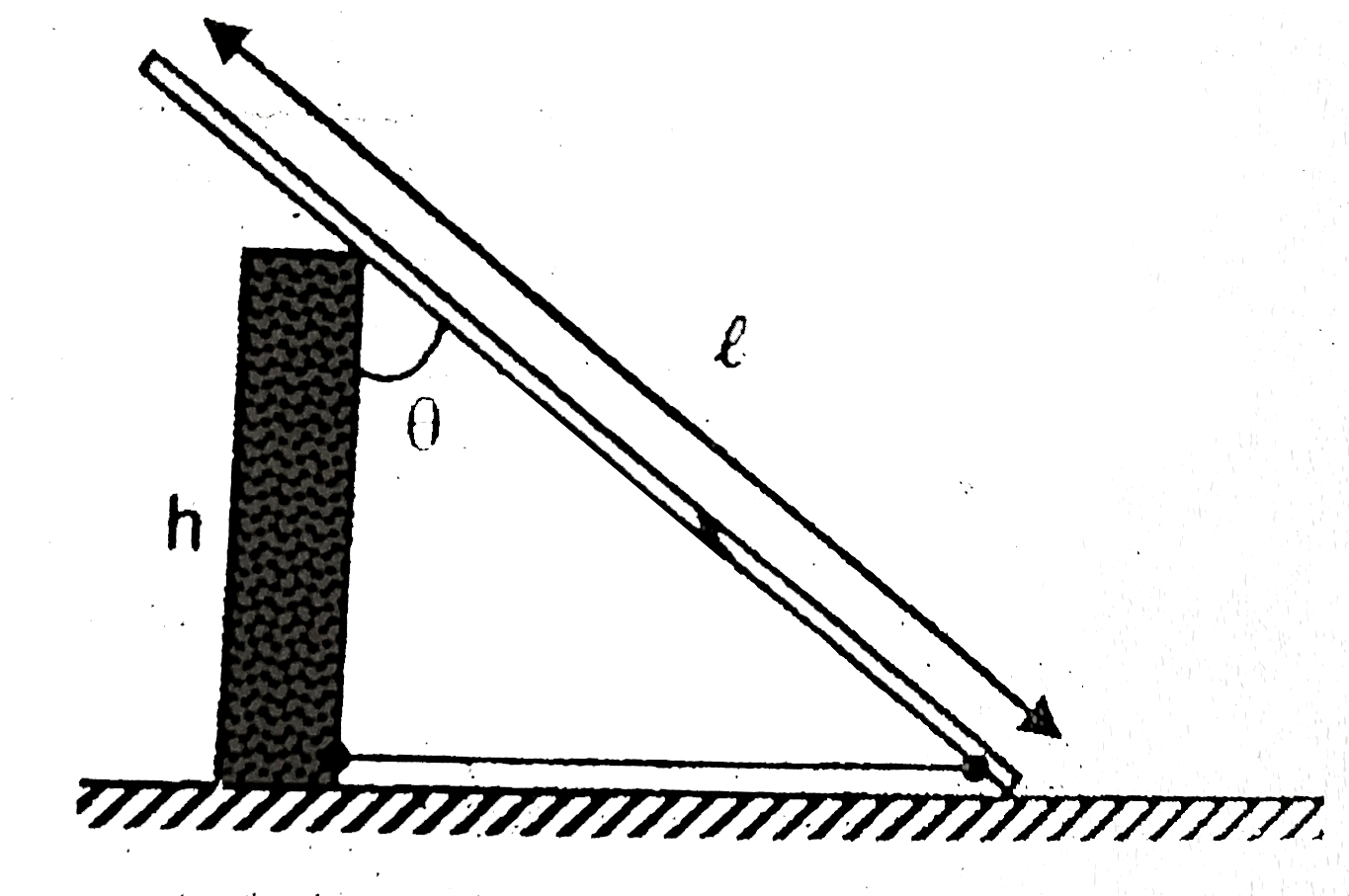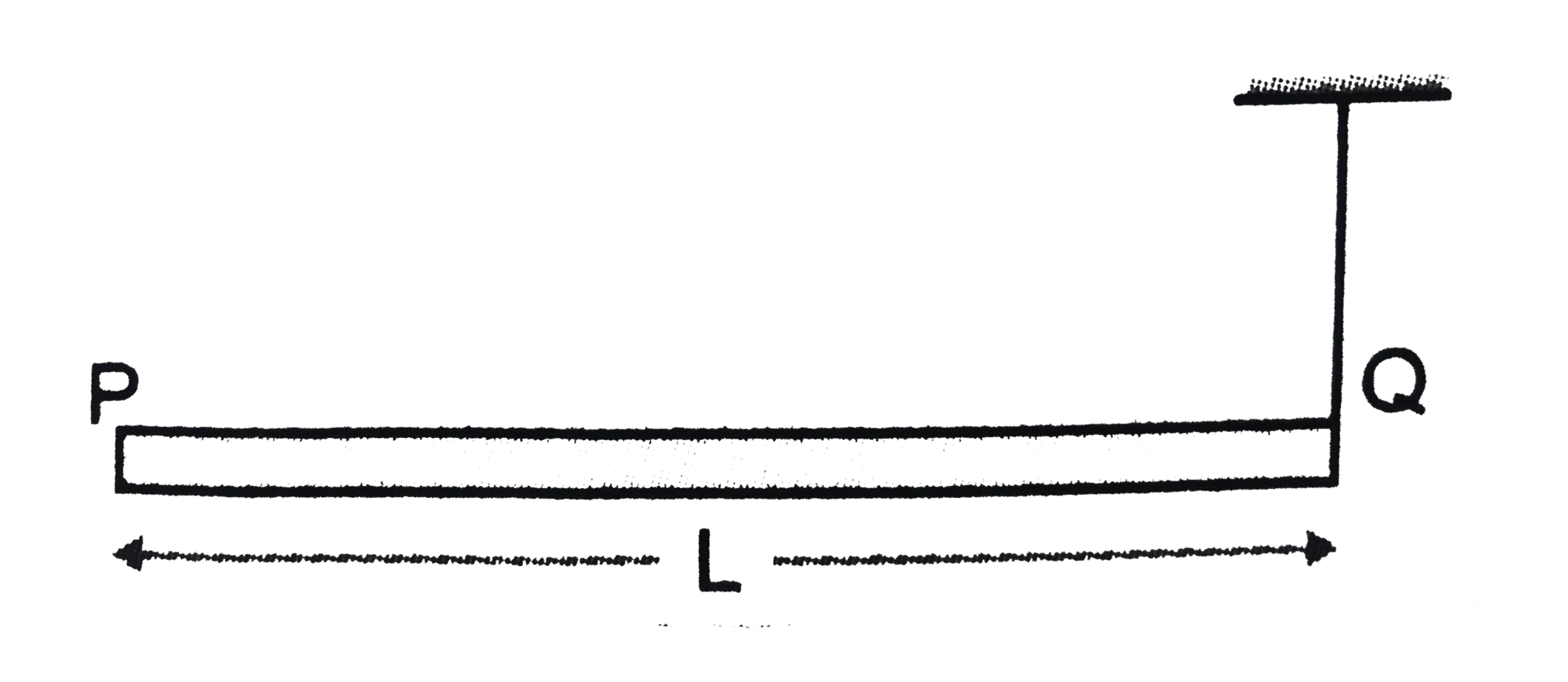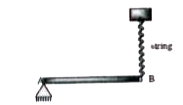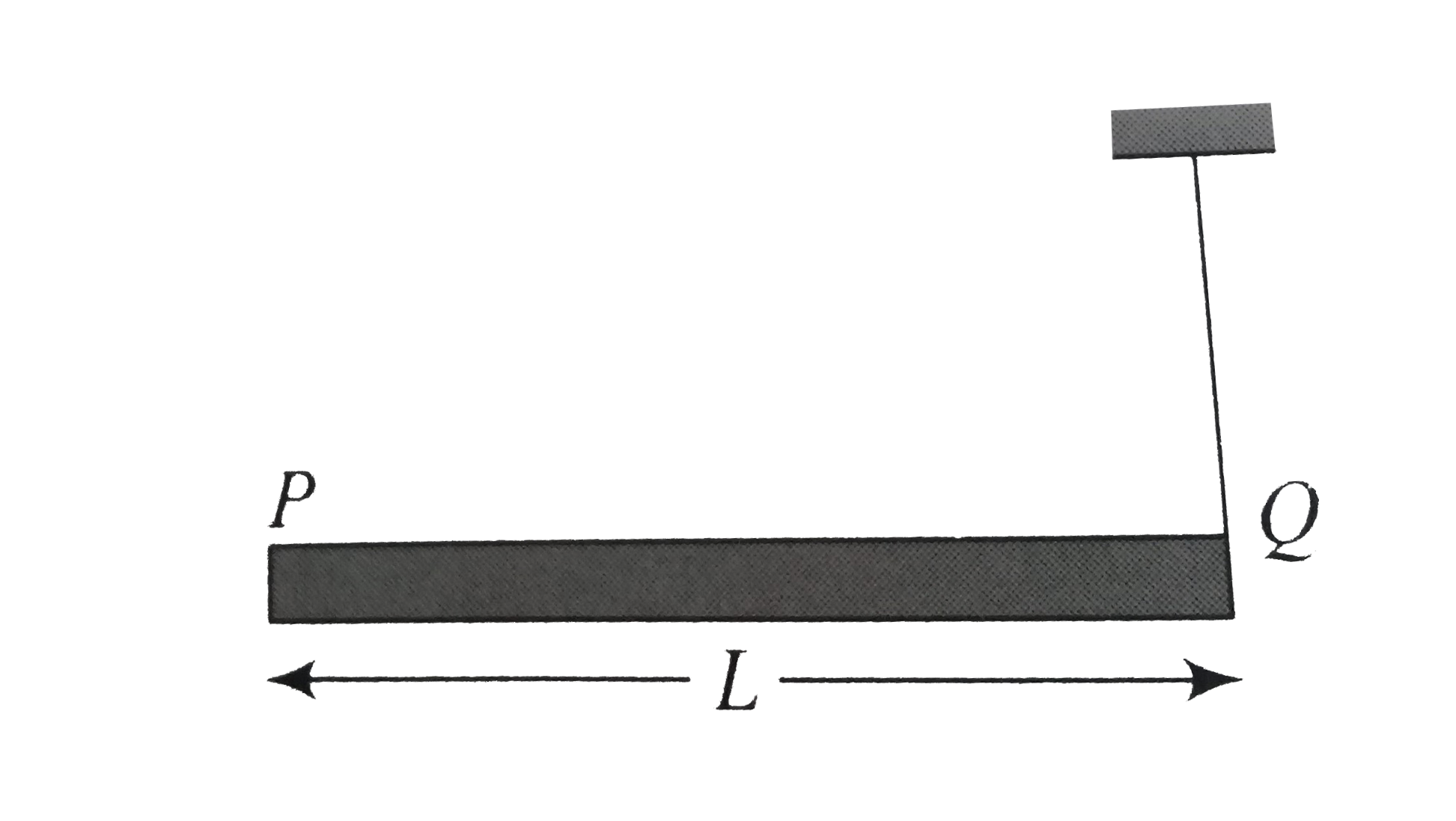A homogeneous rod AB of mass m and length l leans with its lower end against the wall and is kept in the inclined position by a string DC Fig. 21. The string is tied at point C to the wall and at point D to the rod so that AD = AB/3. The angles formed by the string and the rod with the wall are α and β respectively.Find all possible values of the coefficient of friction μ between the rod and the wall.
The rod is under the action of three forces: the tension T of the string the force of gravity mg and the reaction of the wall R = N + Ffr N is the normal reaction of the wall and Ffr is friction Ffr ≤ μN. When the rod is in equilibrium the sum of the moments of these forces about any point is zero. For this condition to be satisfied the line of action of the force R must pass through the point of intersection of the lines of action of T and mg the moments of the forces T and mg about this point are zero.Depending on the relation between the angles a and 13 the point of intersection of the lines of action of T and mg may lie 1 above the perpendicular AM0 to the wall point M1 in Fig. 155; 2 below this perpendicular point M2; 3 on the perpendicular point M0. Accordingly the friction is either directed upwards along AC Ffr2 or downwards along AC Ffr1 or is equal to zero. Let us consider each case separately.1 The equilibrium conditions for the rod arethe sums of the projections of all the forces on the x- and y-axes respectively must be zero and the moments of forces about point A must also be zero:where d1 and d2 are the arms of the forces mg and T respectively. From Eqs. 1 and 2 we obtainThis case is realized when 2 tan α > tan β.2 After writing the equilibrium conditions we obtain3 In this case the rod is in equilibrium for any value ofThus for an arbitrary relation between the angles α and β the rod is in equilibrium if
Related Solutions
A homogeneous rod AB of mass m and length l leans with its lower end against the wall and is kept in the inclined positions by a string DC (Fig). The string is tied at point C to the wall and at point D to the rod so that . The angles formed by the string and the rod with the wall are and respectively. Find all possible values of the coefficient of friction between the rod and the wall.
 View Solution
View SolutionA uniform rod is rested on a wall and its lower end is tied wall with the help of a horizontal string of negligble mass as shown. Length of rod is and height of the wall is . What will be tension in the string ?
 View Solution
View SolutionA uniform rod AB of length a hangs with one end against a smooth vertical wall, being supported by a string of length l, attached to the other end of the rod and to a point of the rod vertically above B. If the rod rests inclined to the wall at angle then
View SolutionA rod of mass and length is hinged at end . The rod is kept horizontal by a masseless string tied to point as shown in Fig. When string is cut, the initial angular acceleration of the rod is :
 View Solution
View SolutionA uniform rod AB of mass m is hinged at one A. The rod is kept in horizontal position by a massless string tied to point B. The reaction of the hinge on the end A of the rod at the instant, when string is cut is mg/x. Where 'x' is
 View Solution
View SolutionAn shaped uniform rod of mass and length is held as shown in Fig. with a string fixed between and wall so that is vertical and is horizontal. There is no friction between the hinge and the rod at .

If the string is burnt, find the angle between and the vertical at equilibrium position.View SolutionAn L shaped uniform rod of mass 2M and length 2L (AB = BC = L) is held as shown in Fig. with a string fixed between C and wall so that AB is vertical and BC is horizontal. There is no friction between the hinge and the rod at A . If the string is burnt, find the angle between AB and the vertical at equilibrium position.
View SolutionA rod PQ of mass M and length L is hinged at end P. The rod is kept horizontal by a mass less than string tied at a point Q as shown in figure. When string is cut, the initial acceleration rod is:
View SolutionA rod PQ of mass M and length L is hinged at end P. The rod is kept horizontal by a mass less than string tied at a point Q as shown in figure. When string is cut, the initial acceleration rod is:
 View Solution
View SolutionA rod of mass is supported by string and friction due to wall. Then friction force on rod due to wall is
acceleration due to gravity
 View Solution
View SolutionA rod of mass m is supported by string AB and friction due to wall. Then friction force on rod due to wall is : (g= acceleration due to gravity )
View SolutionA rod of mass and length is hinged at end . The rod is kept horizontal by a massless string tied to point as shown in the figure. When string is cut, the initial angular accleration of the rod is.
 View Solution
View SolutionA rod PQ of mass M and length L is hinged at end P . The rod is kept horizontal by a massless string tied to point Q as shown in the figure. When string is cut, the initial angular accleration of the rod is.
View SolutionA rod PQ of mass M and length L is welded to the P end. The rod is kept horizontal by a massless string tied to a point Q as shown in the figure: When the string is cut, the initial angular acceleration of the rod is
View SolutionA rod PQ of mass M and length L is hinged at end P. The rod is kept horizontal by a massless string tied to point Q as shown in figure. When string is cut, the intial angular acceleration of the rod is
 View Solution
View SolutionA rod PQ of mass M and length L is hinged at end P. The rod is kept horizontal by a massless string tied to point Q as shown in figure. When string is cut, the intial angular acceleration of the rod is
 View Solution
View SolutionA rod PQ of mass M and length L is hinged at end P. The rod is kept horizontal by a massless string tied to point Q as shown in figure. When string is cut, the initial angular acceleration of the rod is
 View Solution
View SolutionA uniform rod AB of length L and and weight Mg is hinged at one end A. The rod is kept in the horizontal position by a massless string. If the string is cut, then the angular acceleration of the rod will be ["M.I. of the rod about A is "(ML^(2))/(3)]
View SolutionAn L shaped uniform rod of mass 2M and length 2L (AB = BC = L) is held as shown in Fig. with a string fixed between C and wall so that AB is vertical and BC is horizontal. There is no friction between the hinge and the rod at A . What will be the reaction between hinge and rod at point A ?
View SolutionAn L shaped uniform rod of mass 2M and length 2L (AB = BC = L) is held as shown in Fig. with a string fixed between C and wall so that AB is vertical and BC is horizontal. There is no friction between the hinge and the rod at A . What will be the reaction between hinge and rod at point A ?
View Solution
